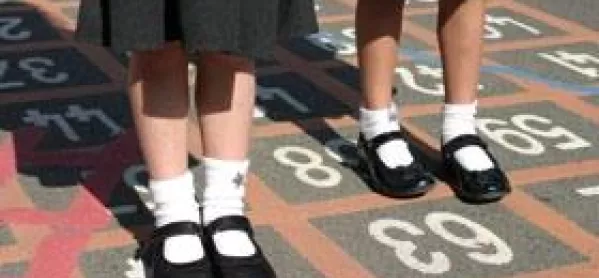Rise of academies could leave standing room only

The huge growth in academy numbers could lead to pupil overcrowding in schools that choose to remain under local authority control, a leading education academic has warned.
This could be a particular issue for the primary sector, where surging birth rates have already led to shortages of places, according to Chris Husbands, director of the Institute of Education, University of London.
His warning came as TES learned that the proportion of the academy sector made up by primaries has nearly doubled in the past year from 15 to 29 per cent.
This means that hundreds more primary schools now have complete control over their own admissions and can refuse local authority requests to take on extra pupils.
The government is encouraging even more to convert by offering grants of pound;25,000 to groups of four or more primaries that want to form academy chains.
Official figures have shown that England will need 450,000 more primary places by 2015. Some areas are already experiencing shortages that have led to pupils beginning their school careers in empty shops, bingo halls, churches, football stadiums and Sure Start Children’s Centres.
Professor Husbands believes these problems could be exacerbated in conventional state schools as academy conversions increase. “If academies are able to decline to grow in the face of local demographic pressure, then the remaining local authority schools face the prospect of potential overcrowding,” he said.
Russell Hobby, general secretary of the NAHT heads’ union, called for a rule change, saying that “a requirement for academies to take their fair share of pupils should be a feature of any academised system”.
Professor Husbands is a member of the commission set up by the Royal Society of Arts (RSA) charity and thinktank to examine the implications of mass academy conversion.
He stressed that he was not opposed to academies. But he told TES that the commission was looking at whether local authorities would have the necessary “levers” to carry out their responsibility to plan school places in a “wholly academised system”, where they had no direct power over schools.
“A lot of focus is on schools wanting to grow but the point about being an academy is that you don’t need to,” he said. “If you say: `Look, we are a very successful primary school with 200 pupils, we think that having 50 more would not be in the best interests of the school’, as an academy you can do that, which means that the additional numbers would have to be soaked up by the community schools.”
Professor Husbands said that one scenario the commission had considered was schools becoming academies specifically to avoid having to take on extra pupils.
His comments followed last week’s report by Robert Hill, a former Downing Street education adviser. Published by the RSA, The Missing Middle: the Case for School Commissioners describes the free schools programme as “an unguided missile”, missing the areas that need new places the most.
It recently emerged that a free school in Beccles, Suffolk, has so far attracted only 37 pupils across three year groups.
The School Admissions Code states that a local authority has no power to force an academy or free school to take on “any child”, although it could ask for an intervention from the secretary of state, who does have the power.
Professor Husbands said: “There is a potential problem of giving local authorities statutory responsibilities but not giving them the means to deliver those responsibilities.”
Sue McMahon, NUT secretary in Calderdale, West Yorkshire, where at least 16 per cent of primaries have already become academies, said: “This is like blackmail because schools might feel forced to become academies to avoid taking on extra pupils.”
In Swindon, where there are already shortages of primary places in some parts of the local authority, around a fifth of primaries have become academies.
David Renard, the Conservative Cabinet member for children’s services at Swindon Borough Council, said this had not yet created any problems, but added that local authorities lacked the “stick” to ensure academies cooperated.
A spokeswoman for the Department for Education said: “Any talk of overcrowding is speculative. Where there is a need to admit children, schools work collectively together to ensure this happens as quickly as possible.”
School breakdown
As of 1 July, 1,957 academies were open, of which 563 were primary, 1,357 secondary and 37 special schools.
A year ago, in July 2011, 801 academies were open, of which 124 were primary and 677 secondary.
Twenty-nine per cent of open academies are now primaries, compared with 15 per cent a year ago.
About 6 per cent of all primaries are now academies or have applied to convert.
Original print headline: Rise of academies could leave standing room only elsewhere
Keep reading for just £1 per month
You've reached your limit of free articles this month. Subscribe for £1 per month for three months and get:
- Unlimited access to all Tes magazine content
- Exclusive subscriber-only stories
- Award-winning email newsletters



